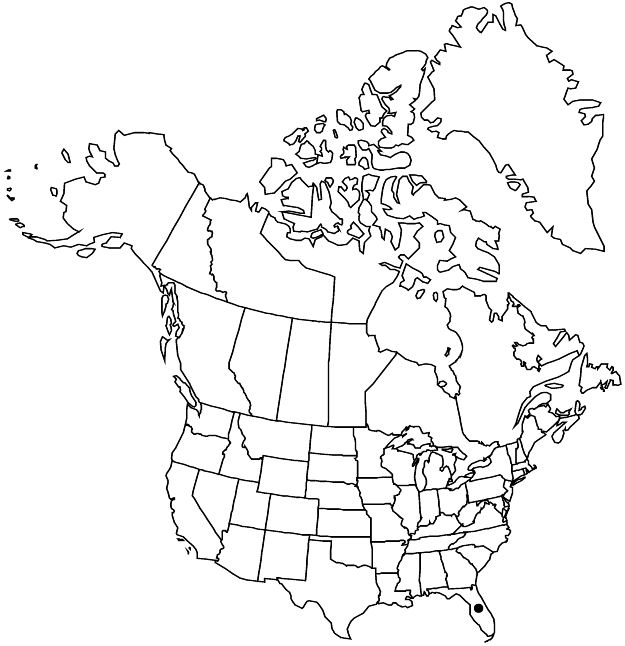Sida santaremensis
Monogr. Malv. Bras. 1: 44, plate 8. 1936.
Subshrubs, to 1 m. Stems erect, sparsely stellate-hairy, hairs to 0.5 mm. Leaves: stipules free from petiole, 1-veined, linear, 7 mm, subequal to petiole; petiole 3–10 mm, 1/5 times length of blade, densely stellate-hairy distally; blade broadly elliptic to subrhombic, to 5.5 cm, 2–3.5 times longer than wide, smaller and narrower upward, base truncate to rounded, margins dentate almost to base, apex acute, surfaces evenly stellate-hairy, densely so abaxially. Inflorescences usually axillary solitary flowers. Pedicels slender, to 2 cm, usually 3+ times longer than calyx, 2 times as long as subtending petiole. Flowers: calyx ribbed, 6–7 mm, stellate-hairy, lobes triangular; petals cream or pale yellow with reddish spot at base, 10 mm; staminal column glabrous; style 11-branched. Schizocarps oblate-conic, 5–6 mm diam., subglabrous apically; mericarps 11, 4–5 mm, dorsal wall somewhat sunken, lateral walls smooth to obscurely reticulate, apex short-apiculate, with few antrorse hairs. 2n = 14.
Phenology: Flowering spring–fall.
Habitat: Sandy, disturbed areas
Elevation: 0–100 m
Distribution

Introduced; Fla., South America (Argentina, Bolivia, Brazil).
Discussion
Sida santaremensis is a relatively recent introduction around Tampa (P. A. Fryxell et al. 1984). It often is infected with the sida golden mosaic virus.
Selected References
None.